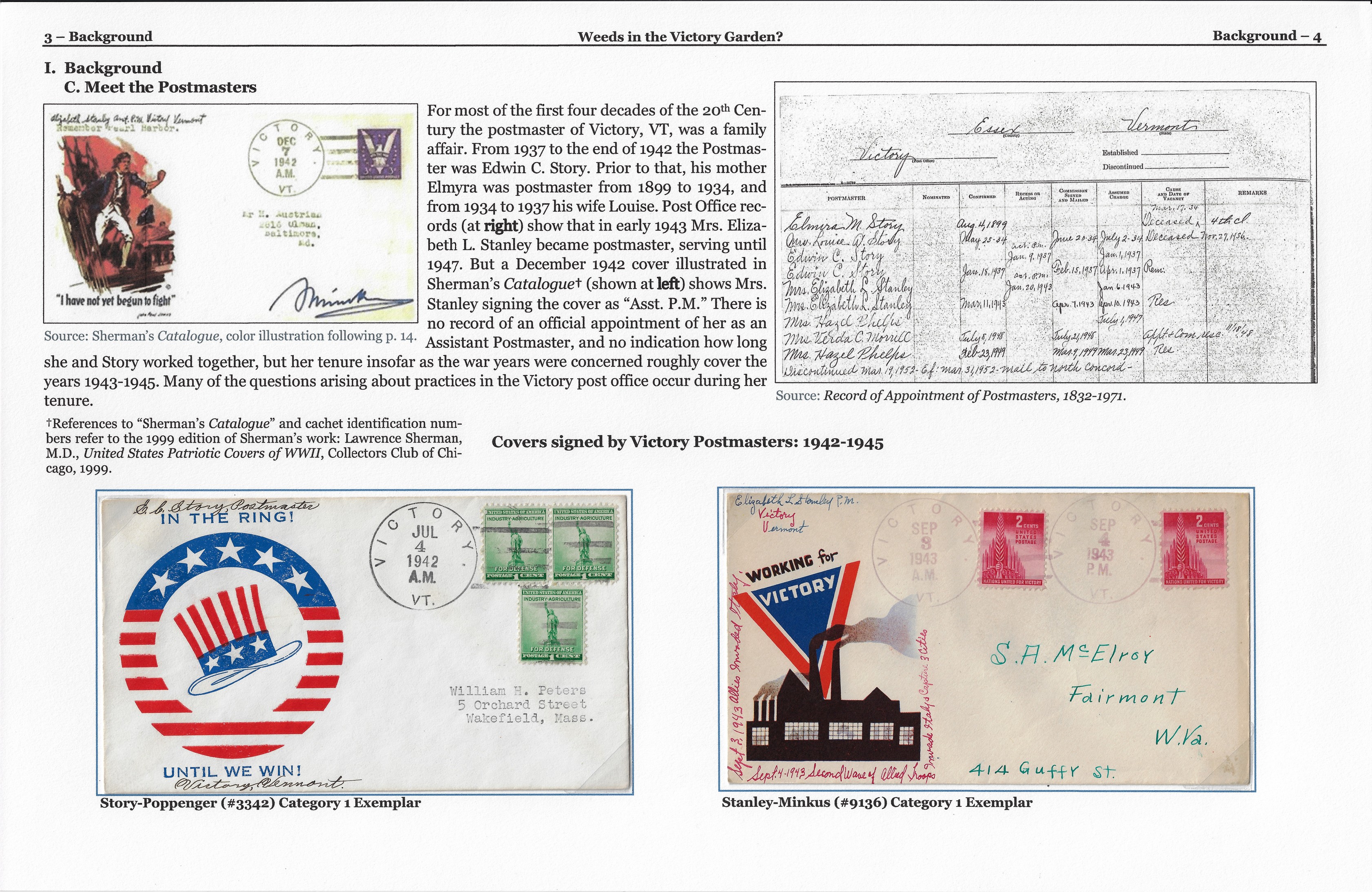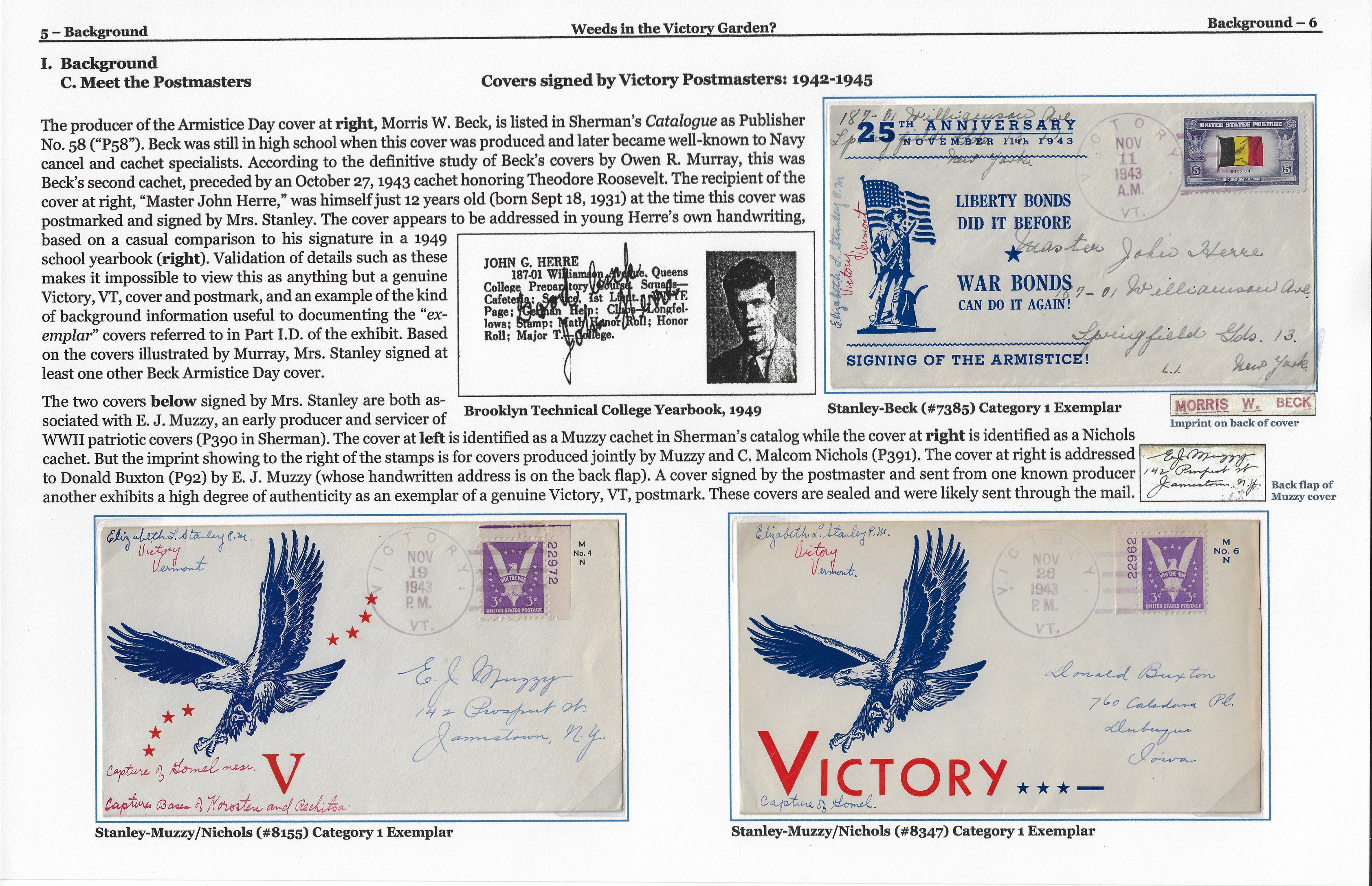Weeds in the Victory Garden?
by Basil Copeland

On the eve of America’s entry into WW II the small town of Victory, VT, was not unknown to philatelists. In the fall of 1941, a group of numismatic and philatelic collectors known as “The Original Order of Zunks” offered to service Labor Day covers postmarked in Victory, VT (above). Victory’s postmark would go to become popular on WW II patriotic covers, especially in the final 18 months of the war.
But the popularity of Victory, VT, covers was tarnished in the 1980’s with claims by popular philatelic writer Herman “Pat” Herst Jr. (left) that the Victory, VT, cancellation device fell into private hands after the end of the war and was used to create bogus backdated covers. This charge was picked up by Lawrence Sherman in his highly-regarded (and well-deserved, despite qualifications presented in this exhibit) catalog of WW II patriotic covers.
This exhibit takes a fresh look at the WW II patriotic covers of Victory, VT. We will see that some aspects of Herst’s hypothesis do not stand up to close scrutiny and will challenge the view that “there is no way to tell the good from the bad.” Nevertheless, concerns about the legitimacy of Victory, VT, postmarks are not unwarranted, especially during the early period of the war (1941-1943). While most of the wartime patriotic covers of Victory are genuine, many are not. The aim of this exhibit is to examine how we can distinguish the “weeds” from the “roses” in Victory Vermont’s WW II philatelic “Victory Garden.” We can with reasonable certainty identify some covers as illegitimate and others as genuine. In some instances, we may not be able to reach a solid conclusion about a particular cover and because of the unfortunate influence of the fakes and fraudulent covers there maybe lingering doubts about some covers.







